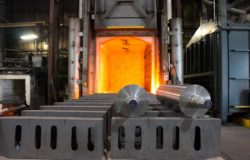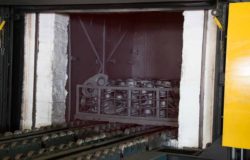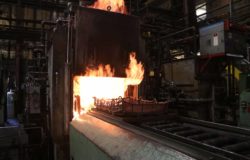Michelle Sanders is the Customer Service Manager at Metals Engineering, Inc. She is new to the world of heat treating and is learning a lot from our experts here Metals Engineering. She is starting a blog post and documenting her adventures below. This post will be one of many. Hopefully you can learn as much as she has!
So, if you’re anything like me, the world of heat treating feels equal parts science and magic. And, since you’re like me, the magic part is cool, but it just makes you hungrier to learn about the science. I’m an enthusiastic learner of all types of topics, with my most recent obsession being heat treating. What about heat treating caught my eye first? Two words I didn’t even know existed: Carburizing and Carbonitriding.
Because I’m excited to have learned new things, I’m going to bask in this moment and start with exactly what Carburizing and Carbonitriding are, so thanks for sticking with me through it. Both Carburizing and Carbonitriding add carbon to metal to add case hardness to a part.
Why would you need case hardness on a part? That’s a super good question, and not just because it was the first one I asked as well. Case hardness ensures you have hardness on the outside of your part while maintaining flexibility in the core. For example, this means your part will be able to handle wear on the outside while the soft core helps absorb shock so the part doesn’t crack.
Some of you are thinking about how similar this is to Induction Hardening. You’re not wrong, my friend, but this post can only cover so many hot topics at once. Induction Hardening is similar, but Carburizing and Carbonitriding are useful when the shape of your parts don’t match up with capabilities required for Induction.
Now, we’ve talked about how these are similar, but, they have different names so they have to be different. You’re right, of course, they are different. While both processes add carbon into your part to build case hardness, Carbonitriding also adds in ammonia as well. Because Carbonitriding adds ammonia, it’s typically used for shallow case depths and aids in part stability. The type of material also impacts the hardness you’ll receive from these processes, so don’t hesitate to ask questions if you’re unsure.
I know, it got off the rails a little there for a minute with all of the details. The short version is: the type of material you use paired with the hardness you require for your part provides key details on how to choose between these processes. Hopefully you learned some cool things while keeping some of the mystery alive. I can’t wait to see you on our post about the nuances of heat treating.
Burning for more info on Carburizing, Carbonitriding, or what’s right for your parts? Awesome! Reach out to our experts at Sales@MetalsEngineering.net with any questions you have!
Michelle Sanders
Customer Service Manager
Metals Engineering
michelle@metalsengineering.net




